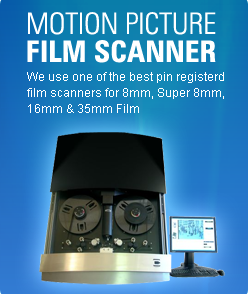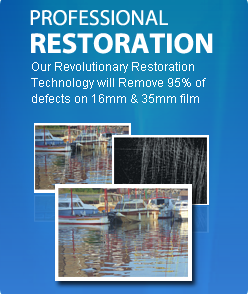
Regular 8mm movie film was never sold commercially with a sound strip but some people did attach a sound strip themselves. Super 8 film has the option but you had to buy the film with the sound strip on it and you had to have a sound camera and microphone. 16mm had both magnetic and optical. On the order form you can let us know if you think your film has sound on it. It does take extra effort to capture the sound and incorporate it into the requested formats. So, we do charge a little more for sound film.
We can not capture any digital audio like Dolby Digital or Sony Dynamic Digital Sound.


The above picture is just an example. 16mm sound film came in many different varieties. 16mm film with optical sound will have sprocket holes on 1 side. The other side will carry the audio track.
Super 8 sound could be recorded with a microphone during filming or could also be recorded using a projector when the film played. The quality of the sound varied widely.
Westminster Fun Facts: Westminster is bisected by U.S. Route 36 (also known as the Denver/Boulder Turnpike) and is adjacent to Interstates I-25, I-70 and I-76. Denver International Airport (DIA) is situated only 30 minutes away from the city, which is also adjacent to one of the state's largest corporate airports, Rocky Mountain Metropolitan Airport. Early settlement in the Westminster area coincided with the discovery of gold on Little Dry Creek in 1858 and was strengthened by the subsequent enactment of the Homestead Act of 1862, which attracted many settlers from the eaSt Westminster's first permanent settler was Pleasant DeSpain, who built his home in 1870 on 160 acres of farmland, and the area soon became known as DeSpain Junction.
Colorado Fun Facts: First explored by Europeans in the late 1500s (the Spanish referred to the region as “Colorado” for its red-colored earth), the area was ceded to the United States in 1848 with the Treaty of Guadalupe Hidalgo that ended the Mexican-American War (1846-48). In 1858, the discovery of gold in Colorado attracted new settlers. During the Plains Indian Wars (1860s-80s), Colorado’s wild frontier was the scene of intense fighting between Native Americans and white settlers. In the 21st century, Colorado continues to rely on its natural resources as well as agriculture and tourism to sustain its economy.





